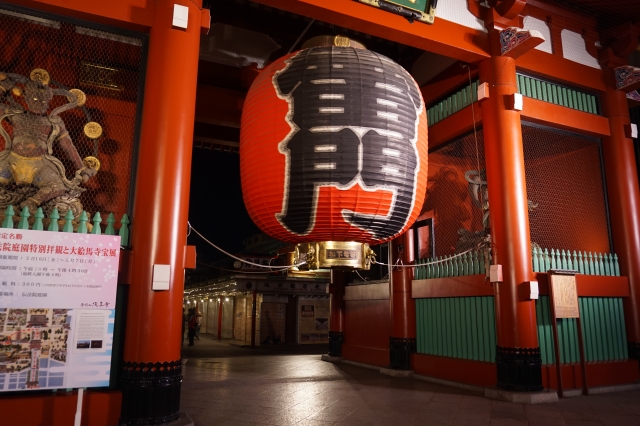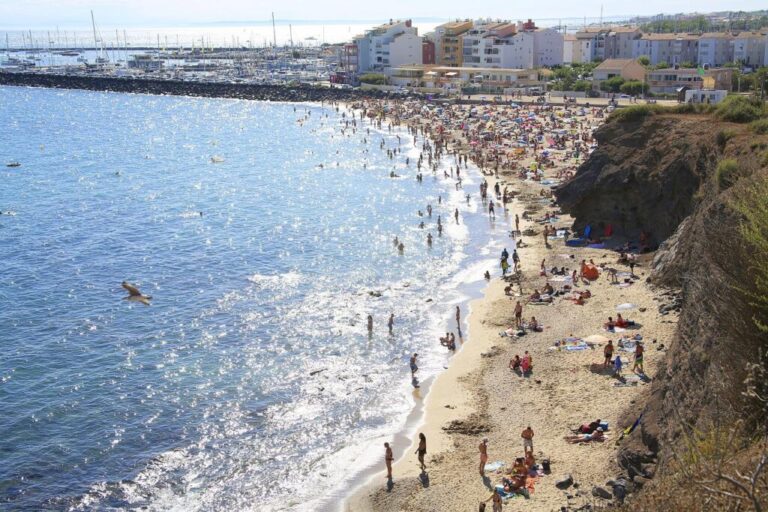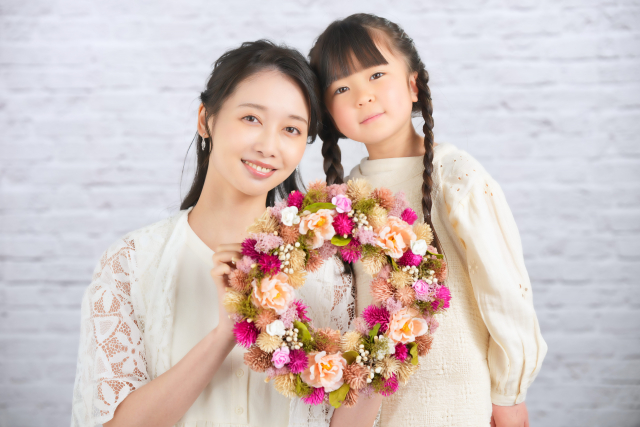When you hear the words “Wind God and Thunder God,” what comes to mind is the image of a folding screen depicting the Wind God and Thunder God. It has quite an impact, and once you see it, you will never forget it.
However, the key to the Wind God and Thunder God may be surprisingly unknown in detail.
Therefore, in this page, we will look at what the Wind God and Thunder God mean and related matters.

Click here to learn Japanese language with the best one-on-one Japanese tutoring lessons in person or online.
Contents
What does the wind god mean?
First, let’s look at the wind god.
Fujin, also called “wind god” or “wind god,” is a god who governs the wind. It also has a history of being used as the name of a specter.
The wind god is said to have a kazabukuro (wind pouch), which blows out the wind, thereby bringing wind and rain.
In the Kojiki (Records of Ancient Matters), Sinatsuhikonokami, the son of Izanagi and Izanami, is said to be the god of wind.
In the Chronicles of Japan, a deity named Sinatobe-no-mikoto or Sinatsuhiko-no-mikoto, born from the breath of Izanami, is said to be the god of wind.
Ancient people believed that wind came from the breath of the god, and “shina” meant “long breath.
And since storms such as typhoons caused tremendous damage to crops, wind gods were worshipped to calm such storms.
In the “Fukuro-zoshi” (poem anthology) of the Heian period (794-1185) and the “Jikkunsho” (collection of stories) of the Kamakura period (1185-1333), there are descriptions of rituals to appease wind gods that bring disasters and illnesses.
In the Middle Ages, winds that caused damage to crops and winds that entered people’s bodies and caused illness were regarded as the work of yokai (monsters). The reason why the illness “kaze” is written as “cold” is derived from the belief that the wind was caused by evil spirits.
The “wind god” in the Edo period’s “One Hundred Tales of Picture Books (Ehon Hyakumonogatari = collection of strange stories)” refers to an evil spirit, which is said to blow yellow breath on people and make them sick.
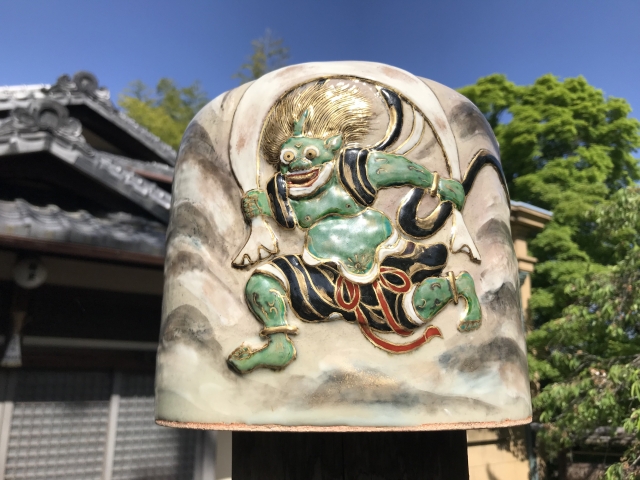
What does the god of thunder mean?
Next, let’s look at the god of thunder.
Raijin, also sometimes called “Kaminari-sama,” “Raiden-sama,” “Raikou,” or “Narukami,” is the god who presides over thunder.
The god of thunder is said to have a drum and strike it to cause lightning and thunder.
In the Kojiki (Records of Ancient Matters), it is written that eight Great Gods of Fire and Thunder (Honokazuchi no Okami) arose from Izanami’s body in the Land of Hades. These eight gods have the following names
- The Great God of Thunder (Oikazuchi no kami)
- The god of fire thunder
- The Black God of Thunder
- Sakui-kazuchi no kami
- The young god of thunder
- Earth thunder god
- The god of thunder
- Fushikazuchi no Kami
Michizane Sugawara (a nobleman and politician of the Heian period) became an object of worship as a god of thunder because of the many natural disasters that occurred after his death.
In folklore, he is often referred to as “Lord Thunder,” and it has been said that he falls to the ground and takes people’s navels. To escape from this, it is said that it is better to chant “Kuwabara (Kuwabara = the name of Michizane’s domain).
Things related to the Wind God and Thunder God
Let’s take a look at things related to the Wind God and Thunder God (Fujinraijin).
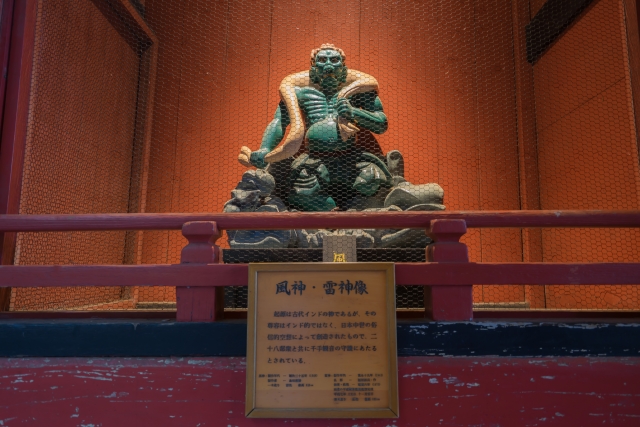
Wind God and Thunder God
The Wind and Thunder Gods is a famous painting by Tawaraya Sotatsu, a painter of the early Edo period (1603-1868), and is designated as a national treasure. The original is in the collection of the Kyoto National Museum, but there is a facsimile in the form of a folding screen and on a ceramic board at Kenninji Temple in Kyoto.
Another famous work is Ogata Korin’s faithful copy of Sotatsu’s painting, “Wind God and Thunder God,” which is designated as an Important Cultural Property (Tokyo National Museum collection).
In addition, Hoitsu Sakai copied Korin’s painting of the Wind God and Thunder God.
Wind and Thunder Gods
This wooden statue in Sanjusangendo Hall in Kyoto is the oldest statue of the Wind and Thunder Gods in Japan. It was made in the Kamakura period (1185-1333) and is a national treasure.
It is said that Sotatsu Tawaraya drew the Wind and Thunder God statues based on this statue.
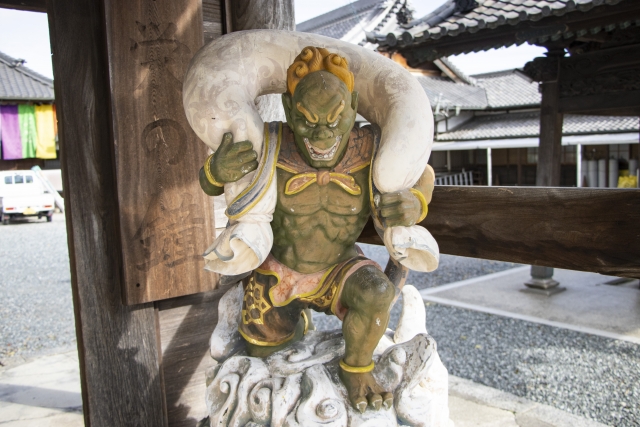
Kaminarimon (Thunder Gate) in Asakusa
The main gate of Sensoji Temple in Asakusa, Tokyo, is called “Kaminarimon” (Thunder Gate), but its official name is “Fujinraijinmon” (Thunder God Gate).
The wind god is on the right facing the gate and the thunder god is on the left, and a lantern (weighing about 700 kg) hanging in the center of the gate bears the inscription “Wind and Thunder Gods Gate”.
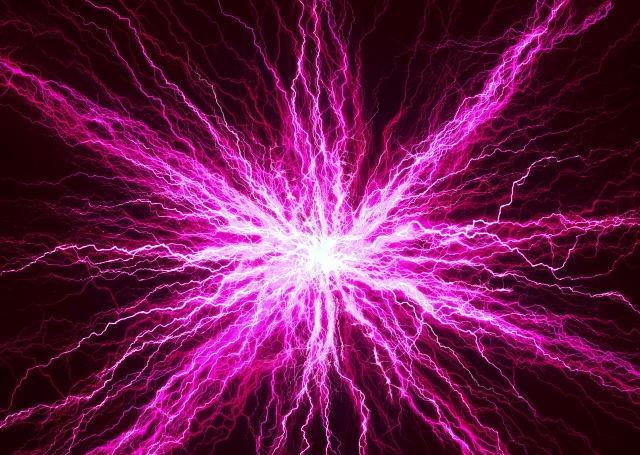
Summary
o Fujin (wind god) is “the god of wind” and is sometimes called “wind god” or “Fuuhaku”.
o Raijin is the god of thunder, sometimes called “Kaminari-sama”, “Raiden-sama”, “Raikou”, or “Narukami”.
o The most famous Wind and Thunder Gods were painted by Sotatsu Tawaraya.

